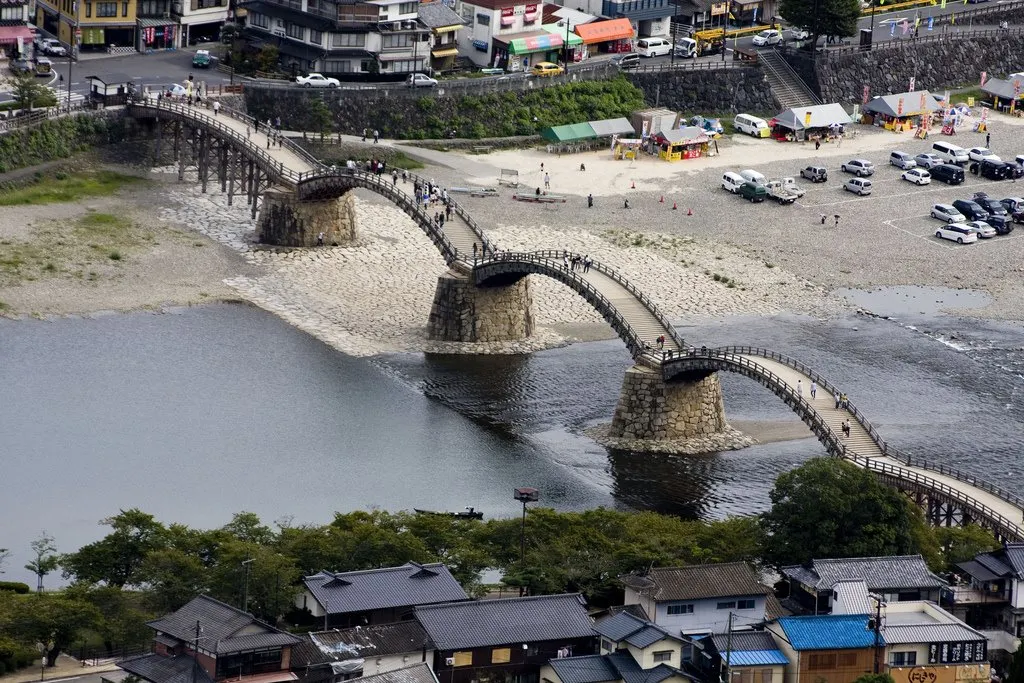Kintai Bridge (錦帯橋) is one of the most important arched bridges in Japan, it spans the banks of the Nishiki River in a series of five wooden arches, it is located in Iwakuni, at the top is the Iwakuni Castle.
 |
| Kintai Bridge |
History
Because the floods wiped out the vast majority of wooden bridges of the time, this bridge was built; the one that was designed to withstand floods, and despite that it did not withstand a flood and was destroyed a year after its construction. It was built in 1673 by Hiroyoshi Kikkawa, after the destruction of the castle, the two were declared a national treasure.
 |
| Kintai Bridge |
In the reconstruction of the bridge, the stone pillars were improved, a new tax was implemented for the maintenance of the bridge, which was carried out as follows: every 20 years the three middle sections and every 40 years the sections that connect the bridge to the shore. Postwar in 1950The bridge did not receive much attention and to expand the Iwakuni Air Station, they took a large amount of gravel near the bridge, this caused the bridge structure to weaken and the two typhoons: the Kezia and Kijiya ended up destroying it, however in 1953 received a remodeling following all the parameters established in 1673. The bridge has been restored in 2001 and 2004 respectively. The iconic shape of the bridge is a symbol for the region, so much so that it has its own festival, the Kintai-kyo matsuri, every April 29. In August, there is a fireworks festival on the riverbank in which 6000 fireworks are fired. It was awarded two stars in the Michelin Green Guide to Japan.
 |
| Kintai Bridge |
General Characteristics
The bridge is built by a sequence of arches, on wooden pillars. Each of the sections is 35.1 meters long, while the final two sections are 175 meters long, 5 meters wide, and 6.64 meters high. The bridge was designed so that The wood will simply let the water pass on top of the bridge frame by joining the timbers together, which would make it more resistant to flooding. It can be crossed at any time of the day; however, if no one is at the toll booth, visitors must pay 300 yen per adult and / or 150 per child at the cash register.
 |
| Kintai Bridge |
Construction
Many of the versions of the bridge that were built over a period of almost three hundred years. The engineers carefully adjusted the wooden parts and the creation of thick support beams by attaching them with metal belts to the main wooden parts of the bridge and then covered by copper sheets.
